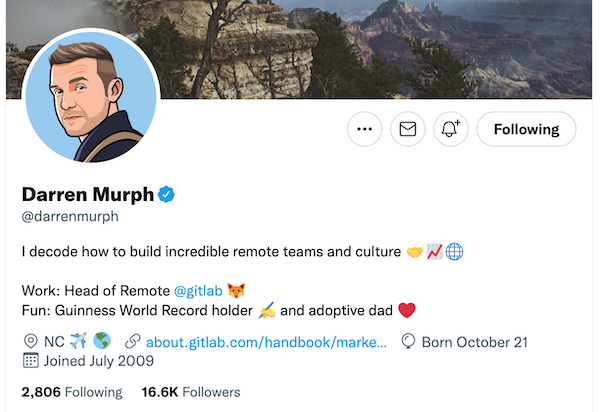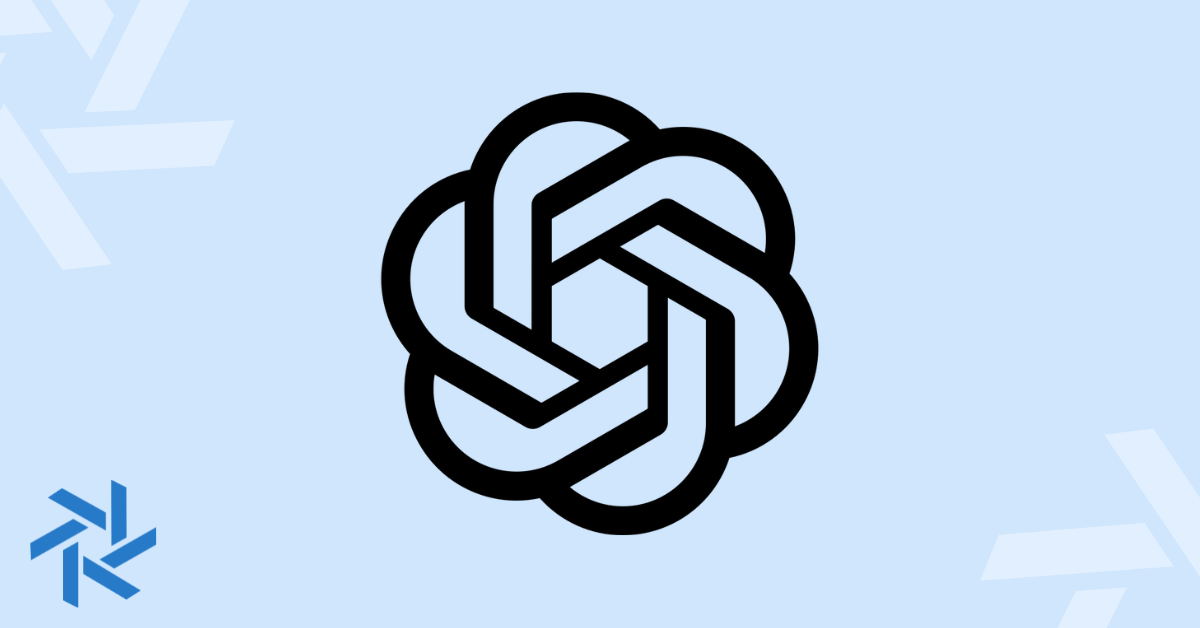Hiring A Head of Remote: Does Your Company Need One?

As more organizations either move to remote work fully or follow the hybrid model, it’s apparent that some help is needed to make remote environments thrive.
And that’s where hiring a Head of Remote can be a critical role to drive success in a distributed workforce.
In this remote work report, a T3 Study of 95 tech companies found a sharp surge in companies creating remote work leadership roles, rising from just 2% in August 2020 to 15% in 2021. And while this data is a bit older now, you can expect to see more Head of Remote jobs opening up.
But what is a Head of Remote? And how do you know if your company needs to hire one? Don’t worry, I put this in-depth guide together to help you navigate it all. Let’s dive in!
What is a Head of Remote?
Someone that is a Head of Remote will be responsible for the entire remote strategy at your company. Various job duties would include ensuring remote workers are connected and aligned via learning and development, utilizing the right tools, onboarding and training, ongoing internal communication, and configuring remote work culture.
Think of the Head of Remote as someone who is critical in connecting the workplace experience and cultural identity of an organization that is distributed. And typically, this person works closely with leadership to help ensure that remote work succeeds fluently.
What Does a Head of Remote Do?
After reading the overview of the role, we can break down what a Head of Remote will typically do. These are the main duties you would expect out of someone leading in this position.
1. Audit everything about the remote environment
Whether your company has been remote-first or just adopting more remote policies, the Head of Remote will be someone to audit everything. This role will look at everything from handbooks, processes, workflows, and tools to identify potential inefficiencies.
2. Define and adjust the remote work strategy
After audits, this role begins to build out the full plan and strategy to make remote work successful. Generally, this can include research, testing, collaborating, and beginning testing new remote tools and gear.
This is a great time for the Head of Remote to build an internal remote work handbook for all employees (or update the current one).
3. Defining onboarding, training, and professional development
An important aspect of the remote leader is to help with numerous areas of hiring, onboarding, and training. This is a time when this person can work with the HR team about best practices and frameworks.
Additionally, onboarding and training remote employees can be quite different from being in an office. So it’s important that new hires have a fantastic experience as they start their new remote job.
Lastly, learning and development (L&D) are important. These are perks to fuel individual growth and improve the employee experience over their career within the organization.
4. Advise leadership on building the remote culture
While company executives, founders, and the board might have strong ideas about remote culture, they may have zero previous experience in this work environment.
This means the Head of Remote is going to be an incredibly important asset to provide direction, answer questions, and better teach leadership about building a remote company or remote teams.
5. Better enable the employee experience
Hiring remote talent is only a part of onboarding, but continually making the remote employee experience top-notch is an important aspect of the Head of Remote role.
For many remote workers around the world, they can feel isolated and overworked. This is where the lead in remote work will be essential to ensure that does not happen.
Here is where a strong and consistent onboarding experience begins, education on the remote work culture and virtual team-building activities are consistent, and help employees be happy throughout their work at your company.
6. Partner with other team leads consistently
In order to ensure a smooth remote work environment, the Head of Remote will need to partner with team leads and managers. This ensures that they are educated on processes and tools, but can easily get each of their teams on board.
Some examples of how this role might partner with others:
- Working with the recruiting and HR department on how to help attract, advertise remote jobs, and hire top remote talent.
- Connect with the finance team about budgets, needs for home office stipends, collaboration tools, and more.
- Partnering with the communications team about delivering internal messages around remote work, handbooks, tools and processes more efficiently.
7. Measure results and gather feedback
Setting up operations and tools for remote work is not over once things are running. Another essential aspect of this job function is measuring results and continuously gathering feedback.
This means analyzing what’s working, and what’s not working, making adjustments, and then repeat. A good way to do this is to get anonymous insights from remote workers, schedule 1:1s with team leads, and follow up with leadership.
What department does the Head of Remote work in?
The Head of Remote can be part of a few departments or could be its own. Typically, you might find this role sitting in Operations, People Operations, or the Communications team. Mostly because the Head of Remote works across multiple departments and is involved with remote workers in different ways.
But there is no exact answer to where the Head of Remote may work in. Instead, it depends on how large your company is and how much help is needed in the remote culture. And because the role has influence everywhere within the company, it might b best to be a standalone department.
Whatever route you potentially take, will be a value add to your company. Building strong engagement, culture, and operations among remote teams is an absolute must!
Where Did the Head of Remote Role Originate?
This was a question I began to ask myself when I noticed more Head of Remote job roles becoming available. And being that this was relatively new, this had to originate from somewhere.
But here’s what I found during some quick research!
This Head of Remote job function idea originated from Andreas Klinger, CTO at On Deck, and was further developed by Sid Sijbrandi and Darren Murph at GitLab. Darren is the Head of Remote at the tech company, a function he helped create during the Covid-19 Pandemic to better align their employees and work culture remotely.
Larger remote teams should get a "Head of Remote".
A role at the intersection of optimizing internal tooling, processes, transparency, collaboration, efficiency, inclusivity, onboarding, hiring, employer-branding, culture and communication overall.— Andreas Klinger ? (@andreasklinger) October 25, 2019
And since then, the Head of Remote role has caught on and generated interest among most companies hiring remotely!
Additionally, Darren has also written and defined GitLab’s Remote Playbook, which has also become popular among other organizations looking to better manage remote teams. This playbook is a great example to dive into and you can even mirror this in your own organization.

Why Companies Hire a Head of Remote
Remote work is not a new concept, in fact, its popularity has continued to grow even prior to the pandemic in 2020. But now, more companies and people are interested in working remotely. And with that, means hiring a Head of Remote can be a necessary move to better align teams.
Let's get into the full view of the benefits and if it’s time your company hires one.
The benefits of hiring a Head of Remote Work
- Keeps remote operations running smoothly and optimizes processes.
- Increases employee engagement and productivity among distributed teams.
- Improves team collaboration and removes siloes among various remote workers.
- Ensures employees are happier, healthier, and excited about working for you.
- Gives your company a competitive advantage because everything is streamlined.
- Saves your company time and money. Instead of trial and error, you have a pro you can quickly adjust and improve before anything negatively impacts the business.
Does your organization need a Head of Remote Work?
If your company is fully-remote, plans on adding more remote employees, or is working in the hybrid model – then hiring a Head of Remote can be a smart move. And this is especially a good hire if your company or leadership has limited experience in building a strong remote work culture.
Companies that have hired a Head of Remote
Wondering what companies currently have someone in the Head of Remote role or related positions? I took a look at some of the companies that have hired or are hiring remote work leaders in their organizations.
- GitLab
- Doist
- Polygon
- Quora
- Zapier
- Hopin
- Deloitte
- Oyster
- Careem
- Limeade
- Stripe
- Okta
- Unilever
- ADP
And many more companies are hiring for a Head of Remote or variations of job titles like Remote Work Lead, Director of Remote Work, Remote Operations, Flex Work, and Future of Work.
To me, this is also a very strong indication that remote and hybrid work is not only here to stay, but will be growing among organizations of all sizes.
How to Hire the Ideal Head of Remote
So after reading everything above, you are convinced that hiring a Head of Remote is necessary for your organization. Awesome!
There are a few additional things you want to prepare for when looking for the ideal candidate. This includes the job description, traits you want in your candidates, and how to set this person up for success. Follow along below to get on the right path!
Today I start my new role as Head of Remote at @doist and I feel like a kid excited for their first day of school ? Absolutely cannot wait to dive in and continue building & advocating for the #FutureOfWork!
— Chase Warrington (@dcwarrington) October 4, 2021
Traits to look for when hiring a Head of Remote Work
First, you want to understand what important traits to look for in your ideal Head of Remote candidate.
Now how you envision this role, will probably be slightly different from another company. However, there is some overlap in traits and skills you want in this person.
- Internal and external communication skills.
- Ability to tell stories and define narratives well.
- A problem-solver who dives into complex challenges.
- Incredibly organized and able to balance multiplied projects.
- Strong empathy to better adapt to conversation and challenges among distributed teams.
- Ability to lead and take ownership of all aspects of remote.
- Can thrive in working independently or as a group.
- Comfortable defining processes, solutions, workflows, and tools with executives and other team leads.
- Excellent writer and documenter to ensure policies and processes are easily digestible by the entire organization.
- Always interested in learning and adapting as needed.
- Values asynchronous work and has in-depth experience working remotely.
Head of Remote Job Description
You can take what you learned above about the Head of Remote and translate that into a job description. But as you think about your listing for this role, you should include a few key areas of what this person will be owning.
- Job Title: While the “Head of Remote” is common, you may prefer to use one of the variations that exist like Remote Leader, Workplace Experience, etc.
- Location: Although you are hiring remotely, ensure to be clear about any locations or time zones you’d prefer these candidates to be.
- Current Remote Culture: This is important for those applying to understand the remote work culture at your company. And not only that but where your leaders need help and want the remote culture to go in the future.
- Company Story: What is your company story? How and why did remote work become something the leadership team cares about? This is a good time to describe your business mission and goals too.
- Outline of the Role: What it will be like as the Head of Remote (or whatever the title) at your organization. What the vision is, the goals for this role, and how does it benefit the person hired for this position.
- Performance Expectations: Include what you want out of this role and what the performance expectations would be if the person was hired.
- Requirements: What do you see as must-haves or requirements of the ideal candidate to lead remote work at your company.
From there, you want to add all the other aspects of a strong remote job listing to ensure you attract highly qualified candidates. Additionally, list this role everywhere from your company career page, LinkedIn, online communities, and remote job boards like AI Jobs.
If you are looking for more examples of various job descriptions around the Head of Remote, take a look at these company examples that GitLab put together.
If you aren’t sure about hiring a fully dedicated person for this role yet, you can also go the consultant route. Firms like Distribute Consulting, Global Workplace Analytics, or Remote-How have experience in helping companies with any remote work needs.
Setting the Head of Remote Work Role up for Success
If you want this role to be successful, it needs just as much attention as any other position you’d be hiring for internally. This role can have a profound impact, which takes time and money.
So you don’t want to rush through the hiring process or not have the right tools for this person. Think of the Head of Remote as one of your top investments!
If you want this person to have the best chance of success, here are a few things you’ll want to have defined and ready.
- Ensuring leadership is already bought in. And not just you if you are a leader, but the others as well. Everyone needs to be aligned on how important this role is for distributed teams.
- A clear understanding of what is expected of this role and what the overall goals that you as an organization are trying to accomplish.
- A budget that is separated and dedicated to the needs of the Head of Remote. This might vary and may need to be adjusted, but there will need to be money accessible for this job.
- The right technologies and tools will be imperative to the person running the remote side of the company. This will also require being open to recommendations and needs that the Head of Remote may like to have.
- Accessibility to team leads and leadership. Not only do they need to be bought in, but available to this person in order to be on the same page. These are leaders who can help align messaging and processes that the Remote Leader puts in place.
Ready to Hire Your Remote Leader?
Phew, this was a pretty long guide, right? But hopefully, this will help you understand the role better and if it's something your company must consider prioritizing in your hiring plans. Make sure to post it on AI Jobs to be seen by thousands. It's quickly becoming a go-to destination for top remote talent.
Check back on this post as I will continue to update this guide. The Head of Remote role is continuing to evolve and I want to ensure you have the BEST information possible. Happy remote working!











